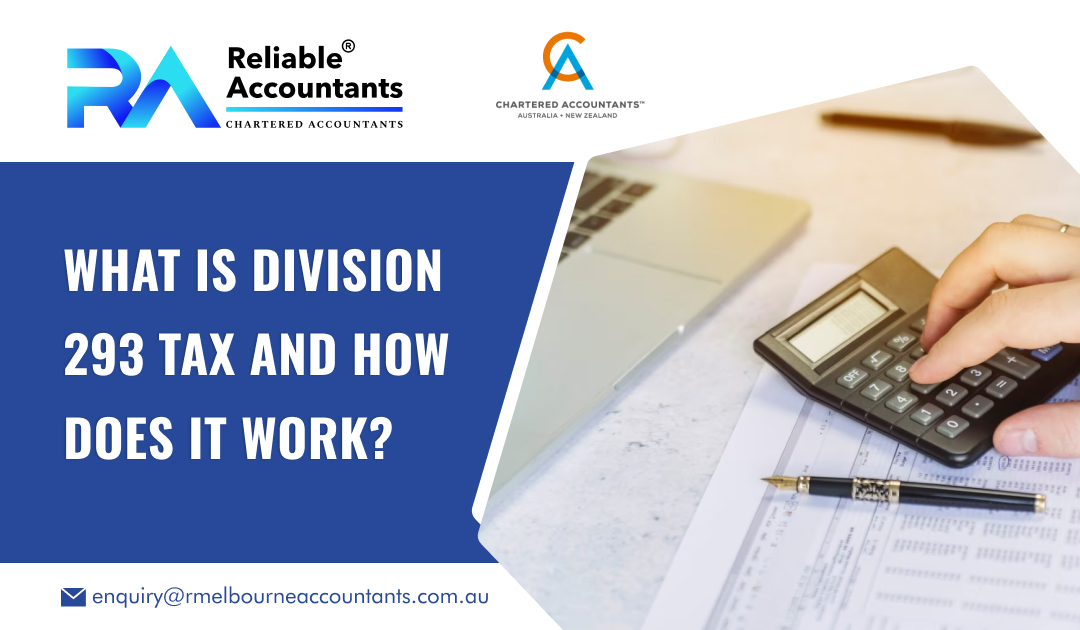If your income and concessional super contributions exceed that total of $250,000, you need to check if you are required to pay Division 293 tax. To know whether you need to pay division 293 tax, you must read this blog.
What is Div 293 Tax?
Div 293 tax is an additional tax on super contributions, minimising the tax concessions for individuals whose combined income and concessional super contributions for Div 293 exceed $250,000. 15% of the amount over the threshold or the taxable super contributions, whichever is less, is levied as a division 293 tax.
How will You Know If You are Required to Pay Div 293 Tax?
After the ATO receive both your income tax return and contribution data from your super fund, if you are entitled to pay, the ATO will send you an Additional tax on concessional contributions (Division 293) notification (Division 293 notice).
Your Division 293 notice will arrive in your myGov mailbox if you file your tax return through myTax. Ask them to change your communication choices if you want your tax agent to receive the notice in place of you.
When you begin with your tax return preparation
As per your income information, if you exceed the division 293 threshold, then the ATO will send you a reminder about division 293 tax, when you prepare your tax return through the online method. The ATO will send you division 293 notice of assessment if they have received the contribution information from your superannuation fund.
If you find your div 293 tax assessment wrong
If you find that you’ve been assessed for div 293 tax incorrectly, this is due the fact that mistakes in your tax return or in the contribution amounts recorded by the fund. Thus, make sure to check the contribution amount and income on your division 293 notice carefully. If you don’t agree with either of these amounts, you may be required to make corrections to your tax return or discuss your recorded contributions with your fund. Modifications done to your super fund or tax return reporting will update your division 293 tax. If you still don’t agree with your Division 293 tax assessment, you can lodge an objection if either:
- you find that your Division 293 tax has not been accurately collected
- it may have been applied to your account in error
How to Pay Division 293 Tax Liabilities?
You are allowed to pay division 293 tax liabilities, either:
- Using your own money
- By releasing funds from the super
How is Division 293 Tax Calculation made?
To check whether you are subject to pay div 293 tax, the ATO uses:
- your tax to check your div 293 income
- contribution information submitted to the ATO by your super fund to check div 293 super contributions.
Once the ATO has all the required information, they will issue an assessment for division 293 tax. However, if you have over 1 fund and it has contributions after the lodgment of your tax return, you may get an amended division 293 tax assessment.
Division 293 Income
With the exception of any reportable superannuation contributions, the income component of the Division 293 tax computation is based on the same income calculation used to determine the Medicare levy surcharge (MLS).
The following factors go into this income calculation:
- taxable income
- aggregated reportable fringe benefits amounts
- net financial investment loss
- net rental property loss
- net amount of family trust distributions that have been taxed
- components with a super lump amount tax and no tax rate
- released amount of assessable first home super saver.
These amounts are included (apart from the assessable first home super saver released amount and the super lump sum amount, which are subtracted) to give the income amount.
Conclusion
The blog shares information on ‘what is division 293 tax’, how to know if you need to pay it, and how it is calculated. The blog covers every aspects related to the division 293 tax. To know if you need to pay division 293 tax, you can reach Reliable Melbourne Accountants.
More Useful Links:

